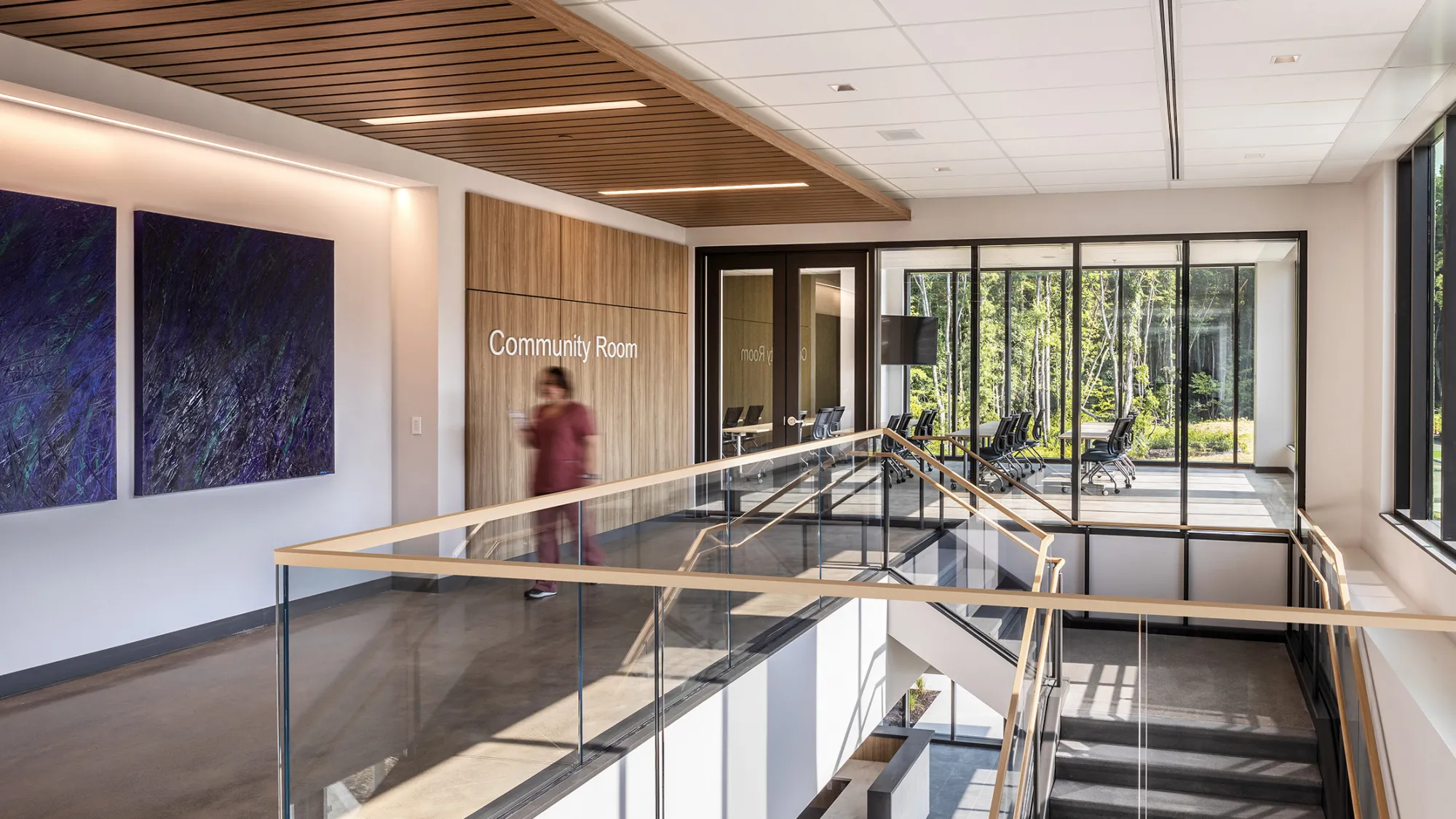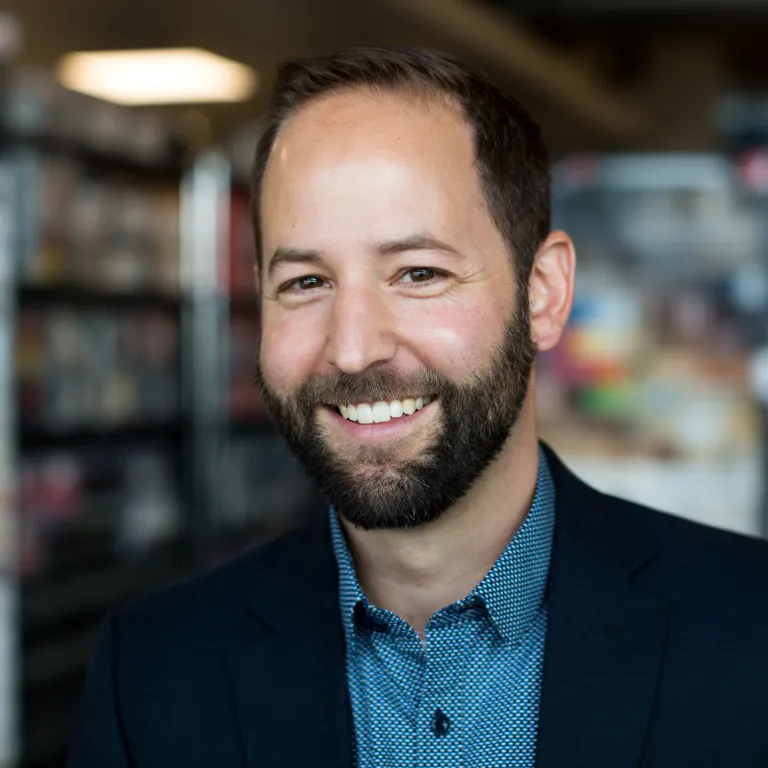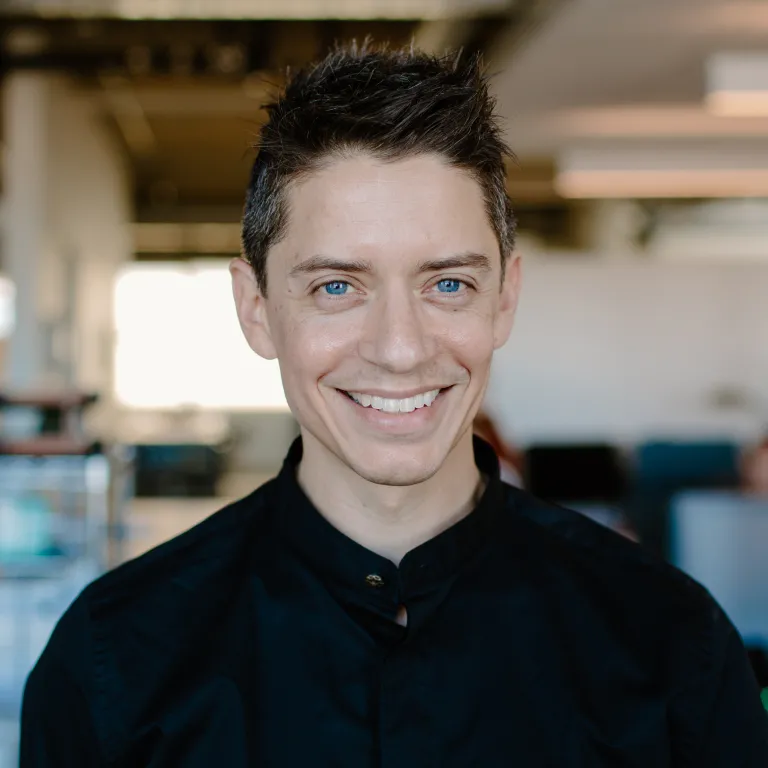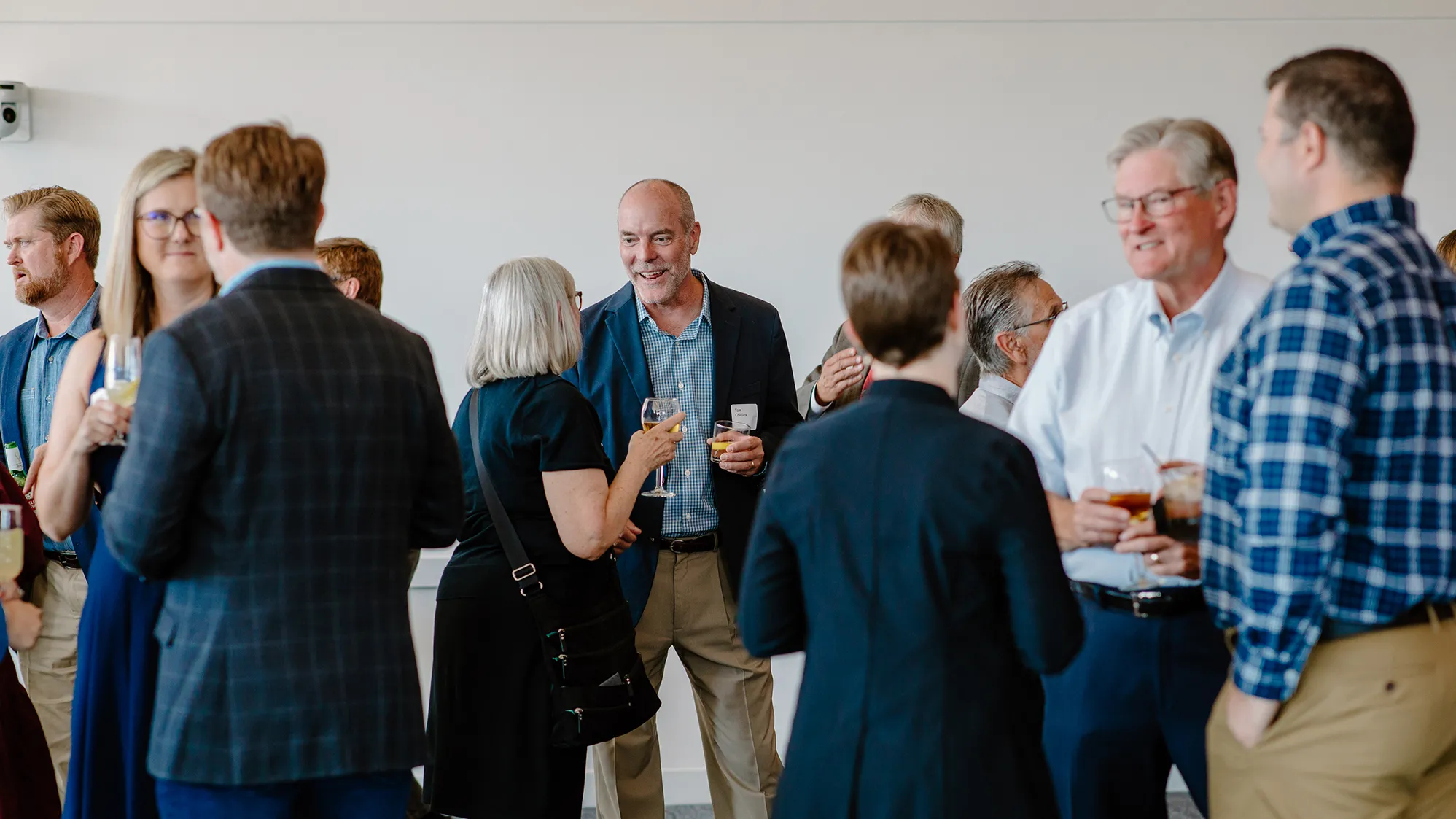The one constant in healthcare design is change. DesignGroup architects and designers are always part of the conversation about what’s next.
For over a decade, DesignGroup has partnered with Advisory Board, a national think tank committed to improving the healthcare industry through research, strategies, and practical tools for execution. Advisory Board participates in our annual Future of Healthcare event where DesignGroup architects present trends and possibilities in healthcare facility design and operations. Guests from across the healthcare industry gather to learn about and discuss these issues and how they might impact their systems.
This year, four DesignGroup architects spoke to an audience of 50 professionals about our core values, the use of AI in the industry, and the importance of inclusive design. Here’s what they had to say.
AI in Healthcare
By Kristina Bertocchi, Designer
Last year, Kristina attended the AAH/ACHA Summer Leadership Summit to learn from experts about the realities of current AI technology and possibilities for its use in the future. She shared what she learned.
- The kind of AI we use, and that experts predict we will be using for the foreseeable future, is called Artificial Narrow Intelligence. This is AI that uses a specific set of data, runs it through an algorithm, and performs tasks that the algorithm is programmed to do.
- Artificial General Intelligence is AI with similar capabilities to a human and Artificial Super Intelligence is AI that is more intelligent than a human. These types of AI do not yet exist.
- The use of AI has become very prevalent in the healthcare industry, but it is not without its challenges. In one instance, hospitals and insurance companies used algorithms that failed to identify Black populations for high-risk care management programs.
- “AI Hallucination” is a phenomenon where an AI will perceive things that don’t exist, creating outputs that are nonsensical or entirely inaccurate. Over time this issue will diminish, but it continues to challenge full faith in AI content.
- Cassie Holmes, PhD, Professor at UCLA’s Anderson School of Management, encourages us to prioritize our time on things that bring us joy. Time saving tasks, such as a meal service plan, have been proven to increase happiness, regardless of an individual’s social or economic status. So let's let AI do the stuff we don’t want to do so that we can spend time doing what we love.
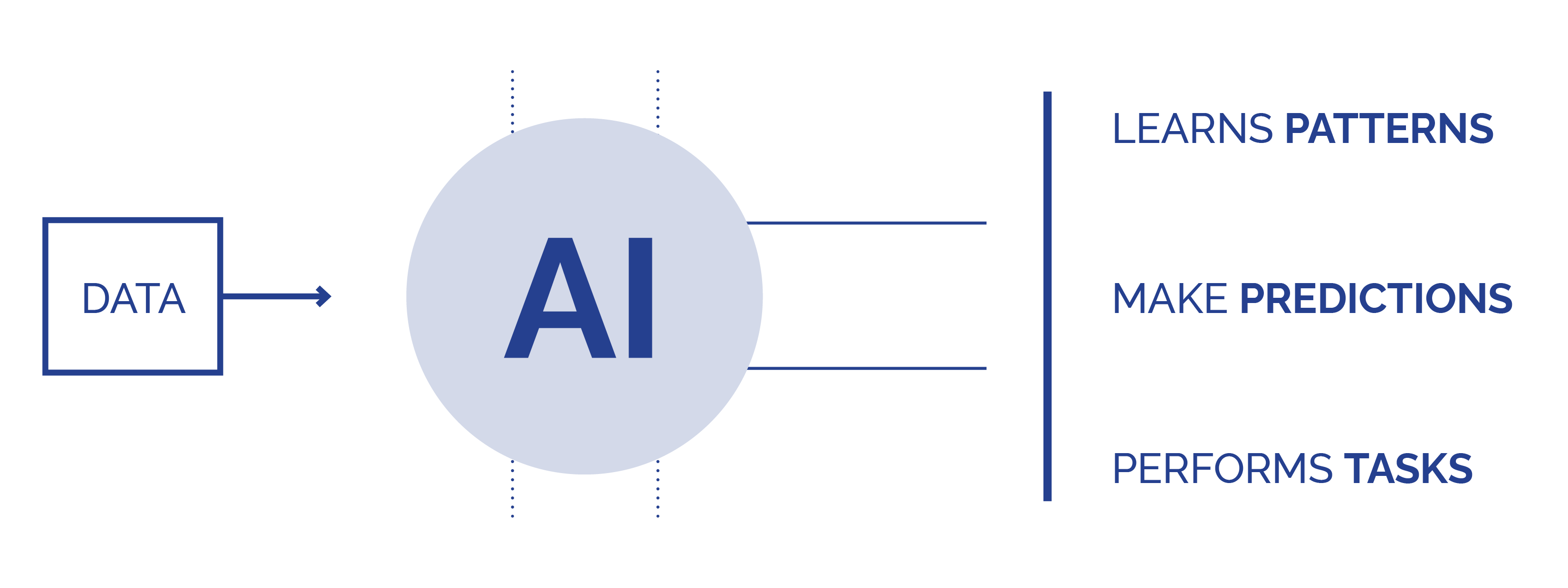
Inclusive Design for Our Neurodiverse Communities
By Nicole DeFazio, Interior Designer
Nicole is a big proponent of inclusive design. In her presentation, she addressed a growing area of architectural interest: design that accommodates the increasing number of patients considered neurodiverse. Highlights of her talk:
- Neurodiversity does not mean disability, but simply refers to the spectrum of how our brains process information and react to external stimuli.
- Historically, most interior spaces are designed for the “neuro-typical” person, instead of creating comfort for those who may fall along different places of the neurodiversity spectrum.
- Inclusive design elements, such as flexible furnishings and incorporating spaces for both focus and respite, give staff flexibility to determine what is most accommodating for their patients and families who support them. When users have control over their environments, it can reduce stress and lead to increased satisfaction and innovation.
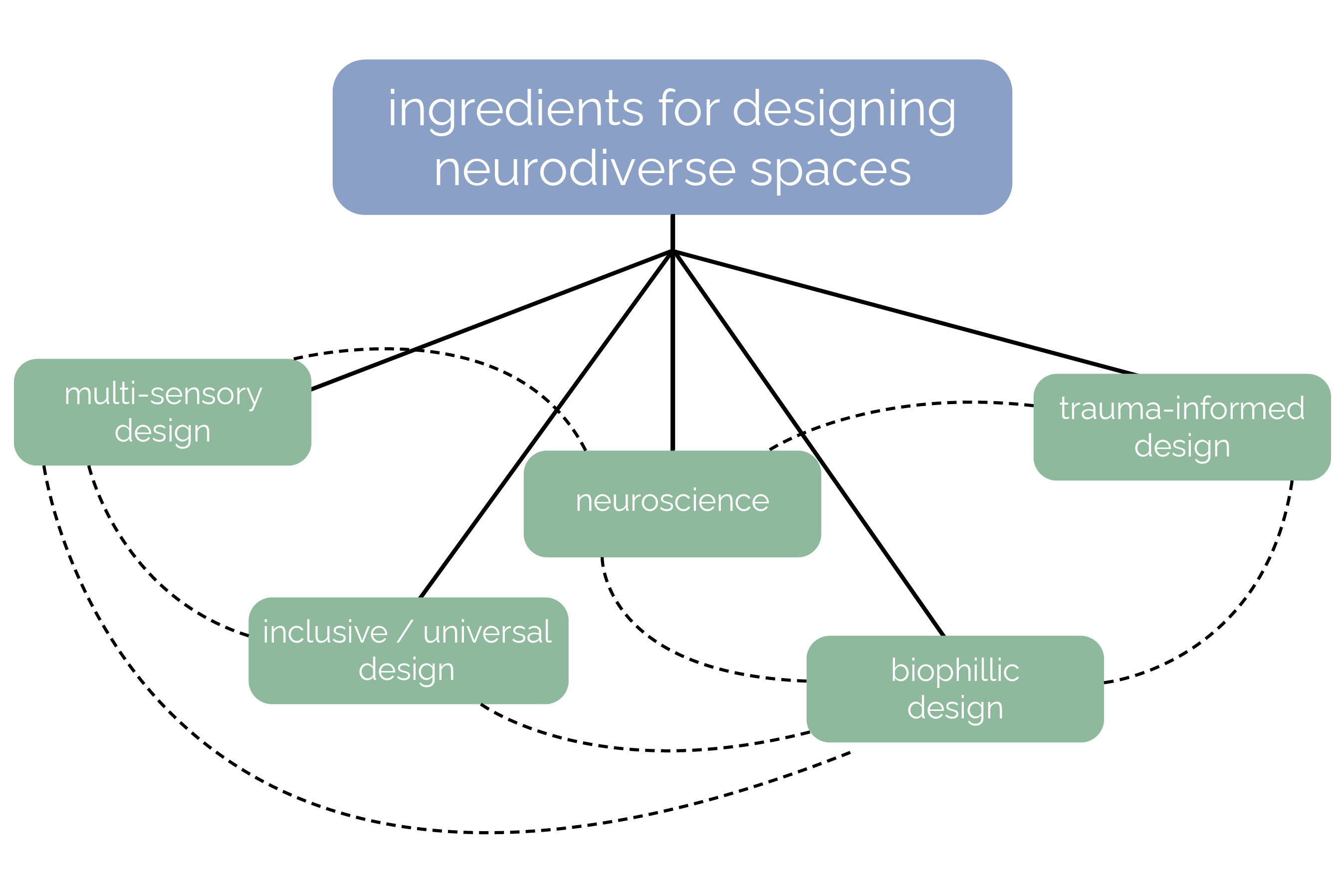
Sherm-isms and The 6 Things (and 1 other thing)
By Mike Forejt, Principal, Project Manager, and Daniel Mathur, Designer
Pioneering the future of healthcare requires sound, fundamental business and management practices. And no one at DesignGroup knows more about that than our CEO, Sherm Moreland. (Also, Sherm loves lists.) So Mike and Daniel explored what Sherm calls “The 6 Things” that are important to project success, and added one of their own to the list.
- “The 6 Things” (Business Plan, Budget, Site, Program, Concept Plan, Schedule) serve as a checklist to ensure that we have all the necessary elements in place before beginning the design process. When all “6 Things” are followed, projects move forward smoothly, with less risk of setbacks or rework.
- Mike and Daniel added Human Experience to the checklist to bring DesignGroup back to the core purpose of our work: creating spaces for the people who will use them. While the first 6 Things address logistical aspects of each project, the new Human Experience element reflects the values that underpin all the work that we do.
- This updated checklist demonstrates that, from the earliest stages of a project, design can and should keep the needs and wellbeing of building occupants at the forefront.
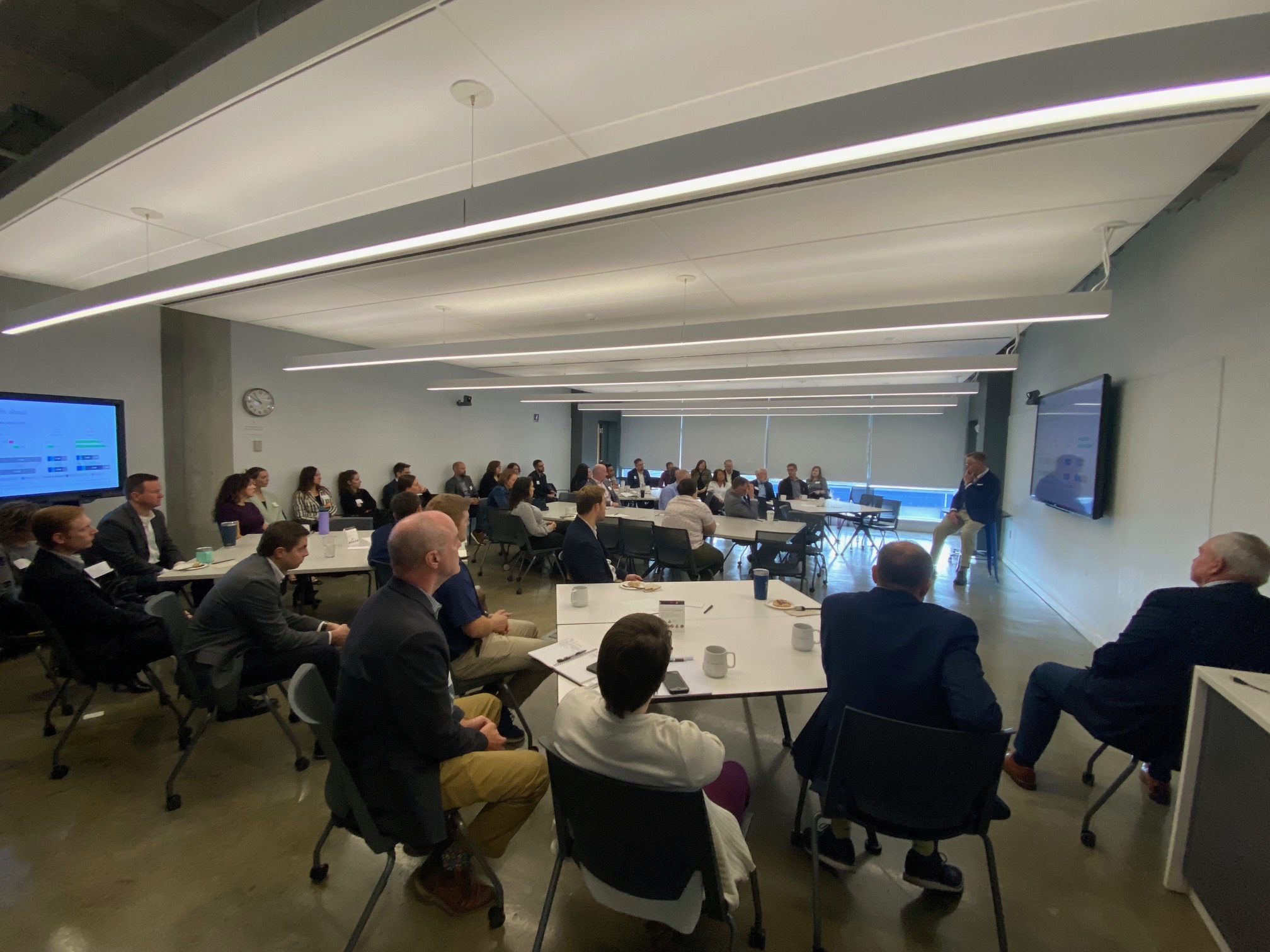
DesignGroup is proud to partner with the Advisory Board to discuss the many ways architecture can support and improve the healthcare profession. To learn more, please explore our healthcare capabilities or connect with us to discuss your needs and interest.
